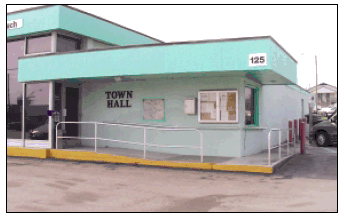B) Accessible Route.
When a walk, pathway, or pedestrian route is necessary to provide public access to a program, service, or activity, an accessible route must be provided. An accessible route is an unobstructed pedestrian path that connects accessible elements and spaces such as accessible parking spaces, accessible entrances, accessible meeting rooms, accessible toilet rooms, etc. It can be a walkway, hallway, part of a courtyard, or other pedestrian space. An accessible route must be at least 36 inches wide, have no abrupt vertical changes in level (such as a step), have a running slope no more than 1:12 in most cases, and meet other requirements for cross slope, surface conditions, vertical height, and passing spaces. The width of an accessible route can be as narrow as 32 inches wide, such as at a doorway or a narrow section of hallway, but only for a distance up to 24 inches long.

An accessible route connects accessible parking (right) with the accessible entrance.

User Comments/Questions
Add Comment/Question